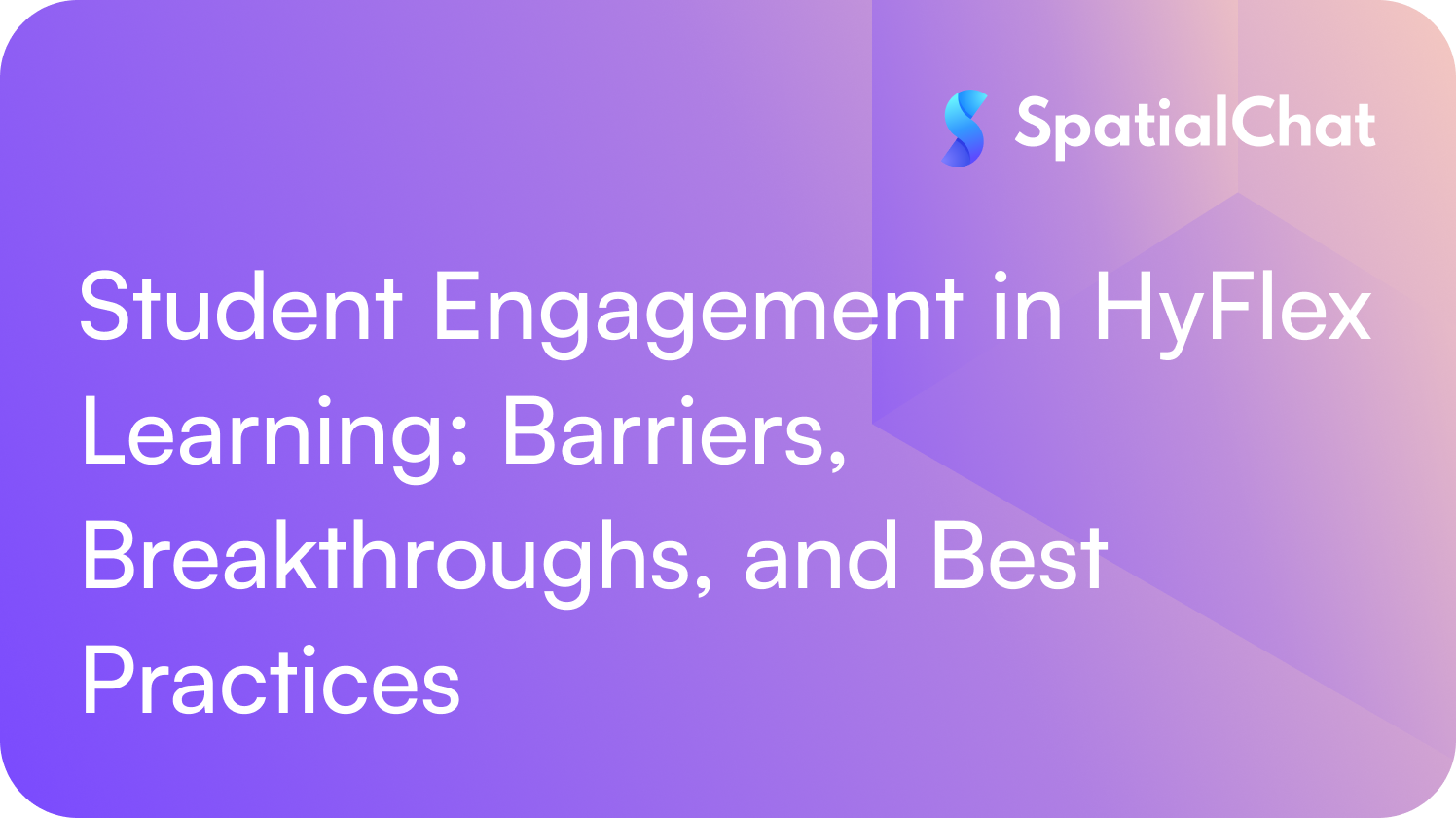Teaching in a HyFlex environment isn't without its challenges, but it's quickly becoming a mainstay across K-12 and higher education. What began as a crisis response has evolved into a flexible, student-centered approach that allows learners to choose how they engage: in person, online synchronously, or asynchronously. Educators have had to adapt quickly, and while the transition hasn’t always been smooth, it’s sparked innovation in both teaching strategies and institutional support—from investments in technology to expanded professional development.
The Core Challenge: Engagement Across Modalities
One of the most persistent challenges in HyFlex education is maintaining student engagement across all participation modes. Even in traditional classrooms, keeping students focused requires intention. But in a HyFlex setting, where students are distributed across physical and virtual spaces, that complexity is magnified.
In-person cues like body language or eye contact are easier to read and respond to. Online, those signals can disappear entirely. This means instructors need to get creative about tracking engagement: Are students keeping their cameras on during synchronous sessions? Are they completing assignments on time? Are they participating in class discussions, either live or through tools like chat, polls, or collaborative documents?
Another overlooked signal is digital presence. If students aren’t navigating away from the learning platform or switching to other tasks during class, that in itself is an indicator of attention. Active participation, like raising hands, responding to questions, offering feedback, remains one of the clearest signs of student connection, regardless of location.
While the barriers are real, HyFlex learning has opened the door to new possibilities. Teachers now have access to more data about student engagement than ever before, and students gain autonomy in choosing the mode that best supports their learning. What’s key is continuing to refine teaching practices, set clear expectations for participation, and create equitable learning experiences for both remote and in-person students.
By embracing both the challenges and opportunities of HyFlex education, schools can foster more personalized, inclusive, and resilient learning environments.
New Opportunities with HyFlex Learning
HyFlex education doesn’t just bridge the gap between in-person and remote learning, but also expands what connection and engagement can look like. By allowing students to join from home or elsewhere, educators are offering more than just flexibility; they’re providing a window into a more personal, humanized learning experience. Students may glimpse a teacher’s environment, interact informally, or see the people and pets that make up their world. While it’s essential to maintain professional boundaries and privacy, these moments can foster authentic connection and trust.
Another powerful advantage of the HyFlex model lies in its capacity to track and measure engagement more effectively. Unlike traditional classrooms, where attention can be difficult to monitor objectively, digital tools can offer real-time insights: how often students participate, how long they remain active in sessions, or whether they engage via chat, polls, or collaborative platforms.
For some students, HyFlex learning also creates a safer, less stressful environment. Without the pressure of constant in-person interaction, students dealing with anxiety, bullying, or social discomfort may feel more at ease participating remotely. Reduced exposure to microaggressions and the ability to engage on their own terms contributes to a more inclusive experience.
Additionally, HyFlex formats increase accessibility. Students and educators who face geographical barriers, health concerns, or other limitations can remain active participants without the burdens of travel or scheduling conflicts. Asynchronous options further support students who are working, traveling, caregiving, or managing unique personal situations, including those who may be hospitalized or in correctional facilities.
The flexibility and inclusiveness of HyFlex education have not gone unnoticed. Surveys show that 68% of students prefer having a hybrid learning option post-pandemic, and an overwhelming 94% of high school students expect virtual components in their future college courses.
Real-World Tips for Effective HyFlex Teaching
As educators continue adapting to the HyFlex model, one truth remains constant: student engagement is the most pressing challenge. Fortunately, digital tools and flexible pedagogies are helping bridge that gap. From quick polls, collaborative whiteboards, and embedded videos to formative assessments, chat functions, and small-group breakouts, technology now offers a wide range of ways to keep students actively involved, whether they’re joining in person or remotely.
The foundation of any successful HyFlex classroom is building trust and predictability. Creating a consistent structure helps students understand what to expect and what’s expected of them, regardless of how they attend. Establishing this safe, supportive environment early on allows students to participate more confidently across modalities.
One powerful way to promote ownership and engagement is to give students a voice in the learning process. For example, allowing students to co-host discussions, lead activities, or moderate breakout sessions sends a clear message of trust. This shift not only deepens engagement but encourages students to take greater responsibility for their learning experience.
It’s also important to extend connection beyond scheduled class time. Open both virtual and in-person office hours, casual “coffee chats,” or informal drop-in sessions that can offer students additional space to ask questions, share ideas, or simply build rapport with their instructors. Incorporating elements of play and recognition can further energize a HyFlex classroom. Friendly competitions, gamified quizzes, or small rewards like badges, stars, or shoutouts can motivate participation and add levity to the learning process.
Equally vital is ensuring that learning feels relevant and valuable. When students perceive class time as redundant to what they could find online, engagement drops. One effective strategy is to integrate reflection exercises, like exit tickets, that prompt students to synthesize what they’ve learned and see its real-world application. Recognizing thoughtful responses in future sessions reinforces their efforts and encourages continued involvement.
Ultimately, while HyFlex education introduces complexity, it also presents immense potential. Educators are increasingly finding ways to merge technology with intentional, student-centered practices. This results in classrooms that are more inclusive, more responsive, and more attuned to the diverse needs of today’s learners, wherever and however they choose to engage.
